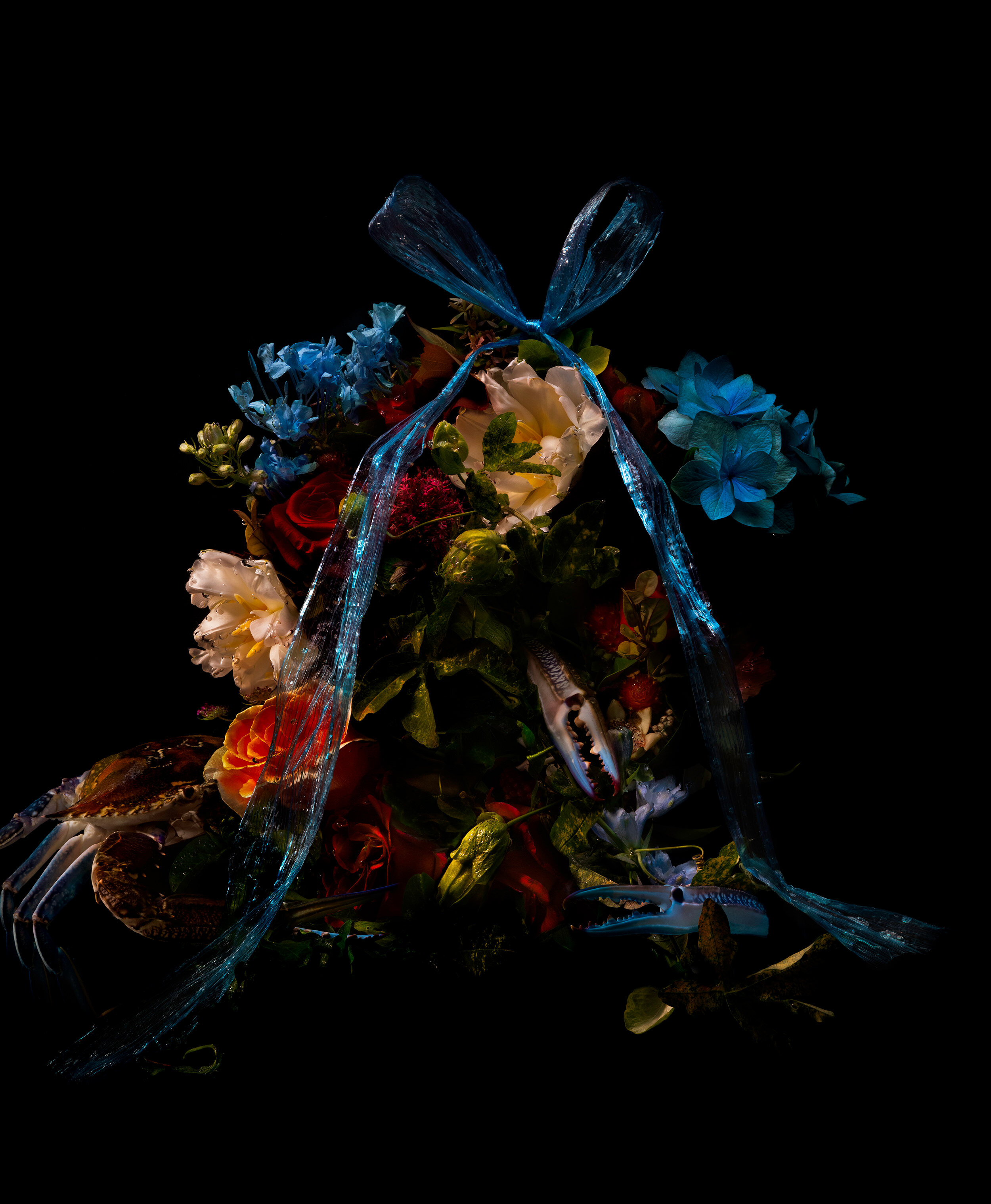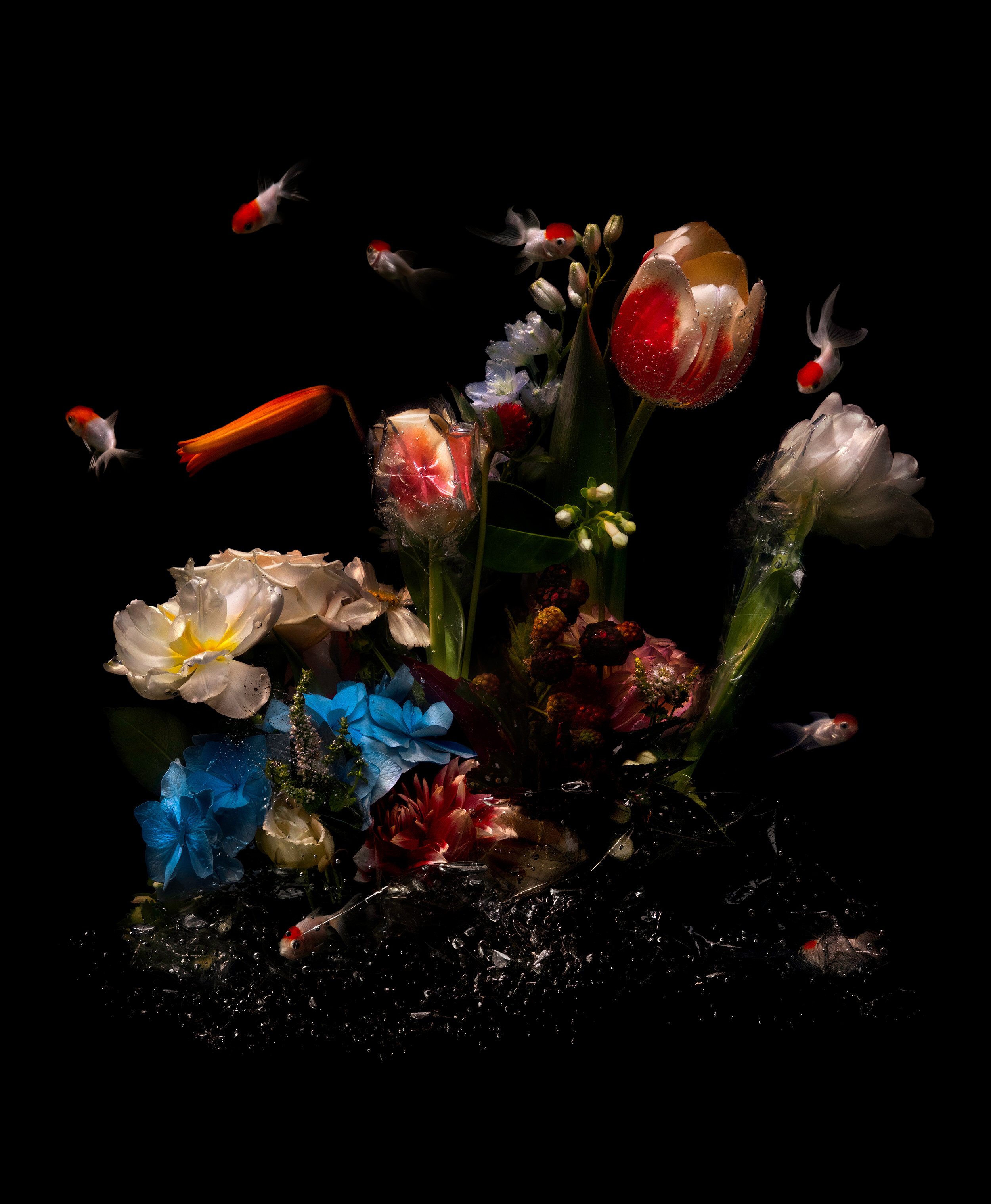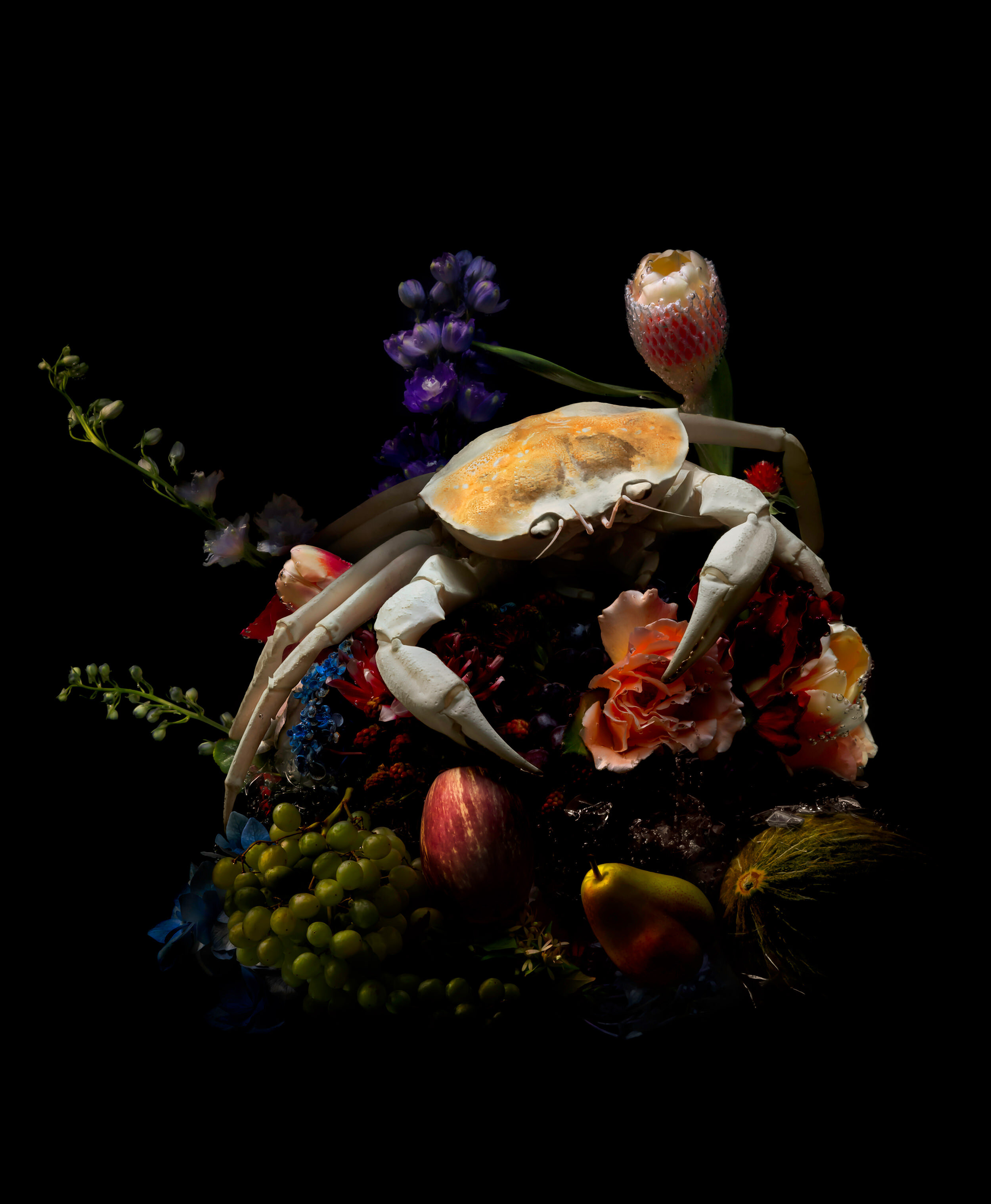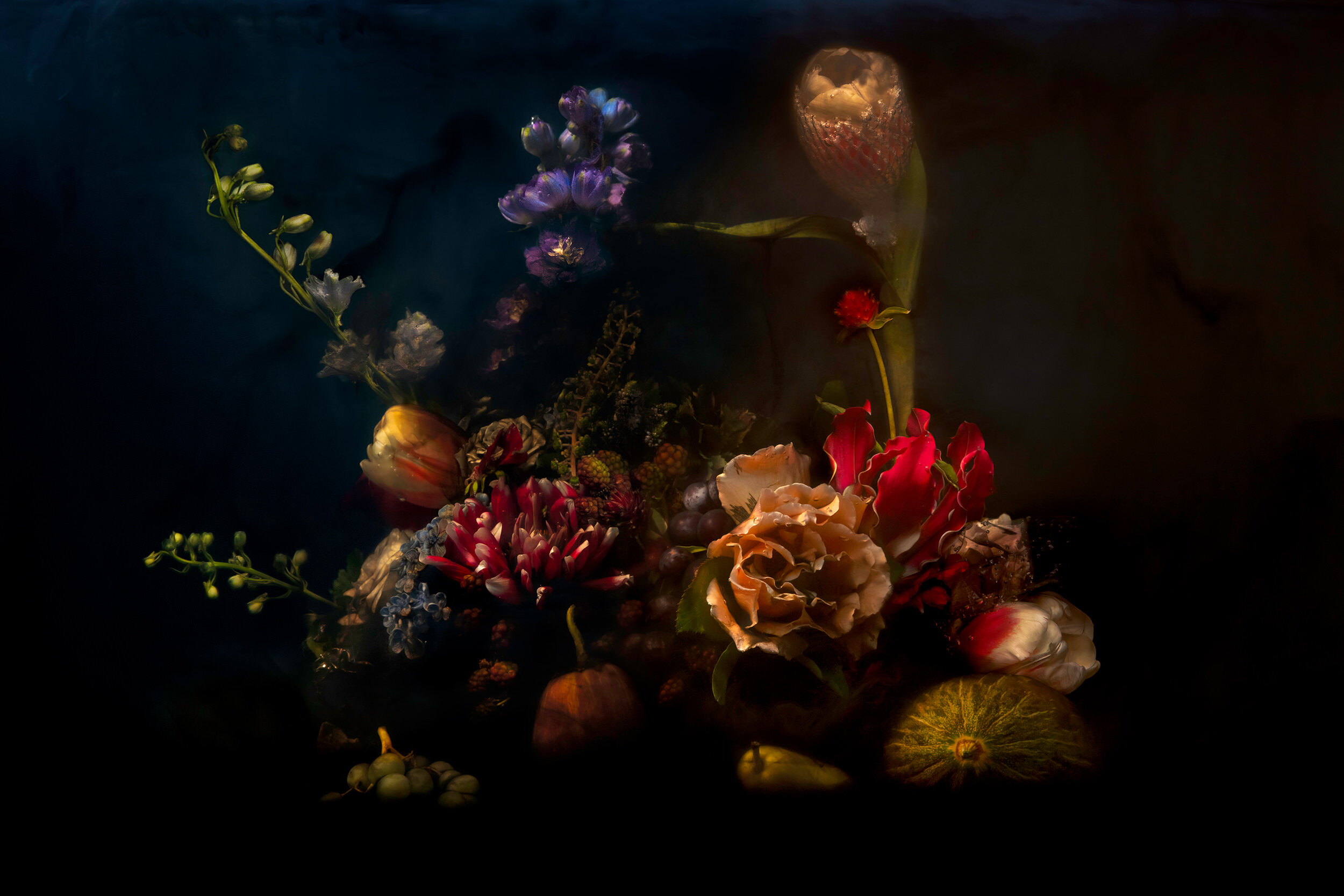Lilli Waters
Lilli Waters (born 1983, Armidale, NSW) is a fine arts photographer whose work explores the human condition through dramatic images of the female form in haunting, windswept landscapes. A Lilli Waters image has a painterly quality, evoking the Pre-Raphaelites with macabre, foreboding elements, a jewel-like palette and a sensitive use of light. Waters makes use of translucent fabrics and long hair to obscure the identities of her subjects, suggesting that the image might be just as much a mirror for the viewer, as it is a portrait.
These images initially appear to represent a romantic idea of beauty and an equivalence between the fertility of the female body and the landscape. Yet in the era of ‘Me Too’ and ecological crisis, Waters’ work offers a critical feminine gaze. Her portraits allude to the conundrum of simply being in a woman’s skin: of how to express physical agency and ease in a society that constantly objectifies women and irrevocably wreaks damage on the environment. These are images that convey complex emotions: the interplay of darkness and luminosity, strength and vulnerability, and the possibility for new understandings based on an awareness of our dependence on the earth.
An ecological concern also finds expression in Waters’ underwater still life series which reference Northern Renaissance paintings in lighting and composition. Her underwater works feature live marine creatures amongst rocks, fruit and flowers to evoke other-worldly landscapes with a palpable feeling of space and slowed time. Waters representations of luxuriant, yet fragile beauty are a reminder of the imminent loss of whole species and ecosystems as a result of climate change.
Lilli’s work has been exhibited to much acclaim in Italy, Germany, Japan, the UK, the US and Australia. Her images have appeared in publications around the globe – including Vogue Living (Aus), Belle Magazine (Aus), Art Aesthetica (UK), Austrian Living (Austria), Jane by the Grey Attic (Aus) and The Opera Magazine (Germany) as well as appeared in feature films, including Fifty Shades Darker and Fifty Shades Freed (USA). She has been a finalist in Fisher’s Ghost Art Award (2020), Beautiful Bizarre Art Prize (2020), Du Reitz Art Awards (2020), Percival Photographic Art Prize (2020), National Portrait Prize (2019), Australian Photography Awards (2018) and Art Aesthetica Art Award (2018).
Could you tell us a little more about your background, and how did you begin creating art?
I was born on a rural counterculture community in Wytaliba, about 100 kilometers out of Canberra, Australia, where nature was a vivid part of our daily lives. People from that community nowadays describe my photographs as looking as though they were taken at this commune, so these early childhood experiences must have been very aesthetically formative for me in my journey as a photographer.
Drawing on nature in my work stems from this upbringing and also from both of my grandmothers, who were environmentalists and activists. Both, in their own unique ways, were lovers of the environment and advocated for its protection, which instilled in me a deep love, respect and curiosity for nature.
I am also curious about women - their bodies, their beauty, their complexities, their minds. Creating images of the female form in nature has become a sort of language, my paintbrush, and has been a transformative and empowering practice.
There was never a specific point of realization that I was on the artist’s path. I remember having this overwhelming feeling of anxiety when I saw something beautiful in nature as a young girl and no one around me seemed to be as excited as I was, so I guess photography for me is a way of capturing the fleeting beauty I see around me and being able to hold on to it and share it with others. That brings me much joy.
What does your art aim to say to the viewers?
Whilst my aim is to create imagery that is imbued with beauty, just as nature is, I feel it is equally as important to reflect the truth, that humanity is in a state of crisis with rampant consumerism and capitalism devouring the world we live in, because it seems there is a fundamental disconnection with the natural world around us. My work often features women being ‘part of nature’, rather than separate from it, a nature that can be foreboding, yet these women are not afraid in these sometimes hostile environments.
Photography is so prominent in our daily lives, I want to use this medium through a female gaze, to gently examine the depiction of the female form; to encompass ideas about vulnerability and power, and aim to contradict stereotypes of feminine frailty. I also hope viewers can have an emotive response and go on their own imaginative journey with the work.
Can you tell us about the process of creating your work? What is your daily routine when working?
When planning to create a body of work with a model in nature, I pick a destination that I feel drawn to, and create a route over about 5 to 6 days. We pack our bags to the brim with props & bags of fabric from op shops, and embark on our adventure in search of landscapes, photographing at dusk and dawn every day, driving, eating and sleeping in between. There is often a broad vision for the work, but I am largely improvising and working with small windows of the right light.
For my underwater floral still lifes, I set up a large water tank in my living room, and use a combination of bolts, wire, weights & fishing line to hold the floral structures in place. The final tweaks of each scene can take up most of the day.
To achieve clarity in the post-production stage, I apply a focus plane merging technique to be able to extend the depth of field in photoshop, where multiple layers are manually blended together to create one single image. This process can take many months before the image is ready for exhibition.
What’s the essential element in your art?
My work is driven by emotion and a sense of empowerment. No matter which camera I am using, the different landscapes I find myself in, the energy between my and my subject, the mood I am in, at the end of the day, if I don’t feel that the image is affecting me emotionally, even if it has taken hours to set up, I don’t end up using that image in a body of work.
In your opinion, what role does the artist have in society?
Art can change minds and people’s ways of thinking, or at least it has changed my way of thinking and seeing the world many times. I can walk into a gallery and walk out a slightly different person, something, often beyond words, has shifted.
Art curator Natasha Rivett-Carnac argues “only a visceral response can move us to undertake the kind of radical action needed to remediate climate change”
Social media provides a platform for people to use their words to try to get their arguments across and change peoples minds, yet the world seems so deeply divided. I’m not sure if words or information alone can engage the imagination and the emotions in the way that art can.
Website: www.lilliwaters.com






